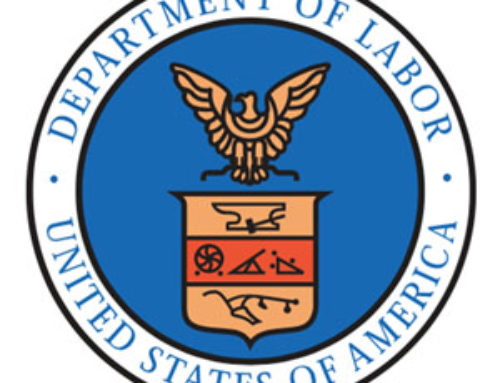In Carranza v. Dovex, a class of farmworkers is suing their employer seeking separate payment for ‘time spent performing outside of picking work.’ There are reasons for growers to be concerned.

Sarah Wixson
Growers and packers often pay piece rate and for good reason — a properly set piece rate can result in enhanced wages for workers and increased productivity for growers.
Piece rate compensation has, unfortunately, become more complicated in recent years and may become even more complicated in the near future.
In 2015, the Washington Supreme Court in Demetrio v. Sakuma held that farmworkers earning piece rate are entitled to separate pay for rest breaks. Under Washington law, rest breaks are “work” and are supposed to be “on the employer’s time.”
The court reasoned that if a farmworker working on a piece rate stops picking in order to take a rest break, he stops earning, therefore, he is not getting paid for his rest breaks as the law requires.
Growers adapted. For nearly two years, most growers have been committed to making sure that workers are taking their required rest breaks and that workers paid by the piece are receiving a separate payment for rest breaks.
Farmworker advocates are now seeking to take Sakuma a step further.
In Carranza v. Dovex Fruit Co., a class of farmworkers is suing their employer in federal court seeking separate payment for “time spent performing outside of picking work.”
They are seeking separate payment for time that is not directly related to producing the piece rate, including “carrying ladders to company trailers, waiting for company trailers, waiting for equipment in order to conduct piece-rate work, travel between orchards and attending meetings.”
The notion that “nonproductive” time should be paid separately from piece rate is not a new idea. It came from California.
Under California law, employers must pay at least minimum wage “for all hours worked,” whether that work is measured by time, piece, commission or otherwise.
Their reasoning for a separate payment for nonproductive time is that while a worker is picking fruit, he is being paid, but when he stops picking fruit to do other tasks, he is not being paid.
Plaintiffs in the Dovex case are making the same argument, but with Washington law. There is cause for concern.
Washington’s minimum wage law, like California law, also requires that employers pay no less than minimum wage “per hour” (the state law is RCW 49.46.020; Wash. DLI Admin. Policy ES.A.5 at 1).
Moreover, the farmworkers’ argument is strikingly similar to the “if you’re not picking, you’re not earning” rationale that persuaded the Washington Supreme Court that rest breaks require separate payment.
Unlike California, however, the Washington Supreme Court, in SPEEA v. Boeing Co. (2000), previously held that the minimum wage statute does not “provide any remedy for an employer’s failure to pay an employee for all time worked.”
In addition, only a year ago, a federal court rejected the assertion that Washington law imposes an obligation to pay for each “hour of work.”
In Helde v. Knight Transportation, Inc., truck drivers paid by the mile brought suit in federal court asserting that they should be paid separately for nondriving tasks such as vehicle inspections or refueling.
The employment arrangement, including what, if any, nondriving tasks would be paid separately, were disclosed during orientation and the pre-trip proposal.
The court found that Washington law does “not require payment on an hourly basis.” The court concluded the law requires only payment that is the equivalent of an hourly minimum wage.
For piece rate workers, the law allows employers to average all amounts paid in a week divided by the hours worked to determine whether the amount paid is equivalent to the minimum wage.
The pending Dovex case involves farmworkers. While WAC 296-126-021 allows averaging to determine minimum wage, the regulation doesn’t apply to agricultural workers.
The agricultural wage regulations do not provide similar rules or guidance on how to determine minimum wage for agricultural piece rate workers (see WAC 296-131-010-140 for more information).
Growers, as well as Department of Labor and Industry guidance, have looked to WAC 296-126-021 to determine minimum wage for agricultural piece workers (visit bit.ly/2nhvvu1)
Despite this, the court in Dovex, found that it was unclear whether Washington law permits averaging piece rate pay and hours for agricultural workers. We will have an answer soon.
The Dovex court has asked the Washington Supreme Court to decide whether “nonproductive” time should be paid in addition to the piece rate.
The Washington Supreme Court has the final word on interpretations of Washington law.
The Dovex case presents numerous elements of Sakuma déjà vu — an industrywide issue is being determined upon a limited factual record, by judges who have, in recent years, had a track record of being less than farmer-friendly.
The outcome is uncertain.
If you are concerned about possible liability for nonproductive time, there are several options:
1. Pay hourly for nonproductive time. When a crew is collectively training, traveling or standing around waiting due to equipment or weather, track and pay hourly for this time.
These common activities are the most likely basis of a class action. The protection is limited.
You cannot reasonably track each instance of nonproductive time that occurs, particularly on an individualized basis.
For example, it may take one employee two minutes to carry his ladder to the company trailers, but may take another employee 10 minutes because his row is farther way.
2. Pay hourly plus piece rate/bonus. An hourly-plus system’s base hourly rate will compensate everyone for every hour of work.
This approach won’t relieve you from calculating rest break pay because the “bonus” has to be figured into the rest break pay.
Your best piece rate workers will likely make less under a hybrid method than under a straight piece rate method.
The result may be less productivity, or worse, your employees leave to work for a straight piece rate employer.
Regardless of the outcome of the Dovex case, an important part of avoiding a lawsuit is communication. Be clear in your notices and communications that piece rate wages include nonproductive time.
Seek input from employees before making compensation changes. Listen to what they say. Work together toward a solution. •
– by Sarah Wixson, an attorney focusing on employment litigation for Stokes Lawrence Velikanje Moore & Shore in Yakima, Washington.






We at Datatech have responded to this need by providing payroll software that will calculate Rest & Recovery time based upon the hours worked and pieces picked, and can also pay the Break Times at an hourly rate. You can find more information at datatechag.com